
How to Find The Best Budget Studio Monitor (that doesn't sound trash)
If you're in the market for some cheap studio monitors, the good news is that you've got options.
Whether you're new to music production and looking for something to get started on or an experienced producer who wants a cheap backup pair of studio monitors for a second studio, we've got you covered.
And with many options, becomes many comparisons, options, feature lists, and prices.
This can sometimes be overwhelming.
Which studio monitors are the best for 200 dollars or less?
That's where we come in - because we tested them all! And we've made a list of the best ones you should consider taking a good look at.
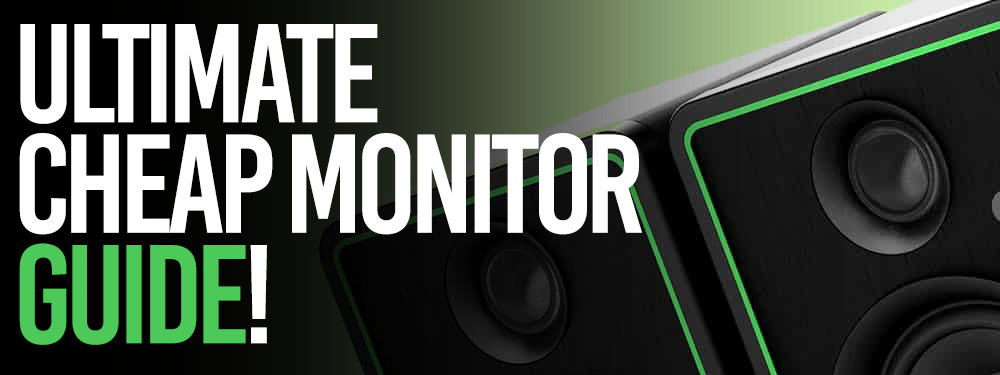
For such a small budget, you should not expect amazing bass and low-end richness.
Don't get me wrong, you can still find some amazing budget studio monitors that pack a punch (see the list below!), but due to the size of the woofers on more budget speakers, it's usually not their best selling point.
On the other hand, cheap studio monitors can still have amazing frequency response, balance, and clarity - so you can do some really solid mixing with any of these.
We've ranked the best cheap studio monitors to help you determine which will work best for your studio space.
Want to get your music on active & relevant playlists that actually get results?
Get your music heard now 👇
9 Best Studio Monitors under $200: Ultimate Guide
Time to get you a good set of studio monitors for a budget!
These are the best studio monitors under $200, taking into account bass response, bass frequencies, build quality, and sound clarity:
Top 9 Studio Monitors under $200:
Note that pricing for these changes all the time and depends on the region you're in - so be sure to look around and research them all.
You might find some deals that make one of these studio monitors more appealing than any of the other ones!
Bonus: check out our ultimate best studio monitor comparison, it goes into a lot more depth to better help you choose the right studio monitors.
Let's dive deeper into each one, so you can decide which is the best fit for you.
#1. PreSonus Eris E3.5 – 3.5″
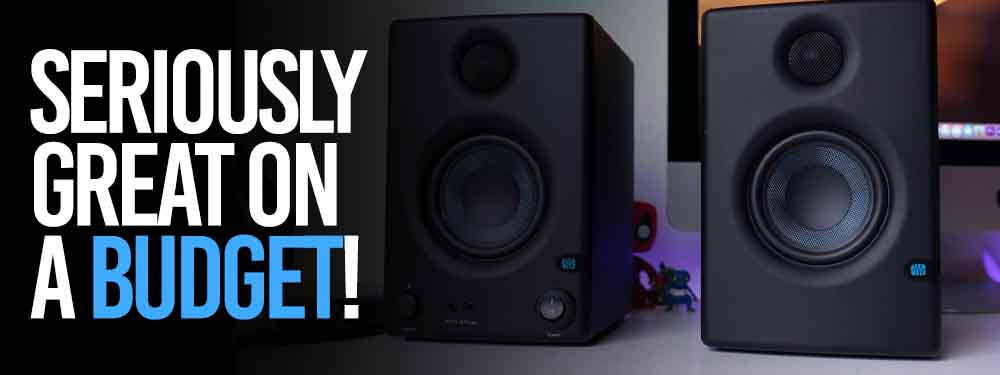
The PreSonus Eris 3.5-inch Monitor is one of the top brands out there and it's well worth a second look at, with many reviews speaking to its quality for the price.
The compact size makes it not only great for your budget - they're relatively portable if you want to do some on-the-go mixing.
The PreSonus also has RF interference protection as well as noise isolation; plus Turn-On/Off transient protection so you can focus on your work without interruption!
The specs on these speakers are top-notch for the price.
The E35 has a frequency response of 45 Hz – 20 kHz, a 3.5-inch driver, and a neodymium magnet. It also has a single-cable connection, which makes it very convenient to set up.
Because it has a 3.5-inch woofer, it is slightly bigger than some of the other monitors on this list, which lets the Eris create a sound with more bass and depth.
It also has an impressive max SPL, so you can use it in loud environments without worrying about blowing out your ears.
The E35 is a very affordable option and a great choice for beginners. When it comes to balancing price with sound clarity, these ones are a must to consider.
Check out the PreSonus monitors here.
#2. JBL Professional 1 Series, 104 Compact Reference Monitors
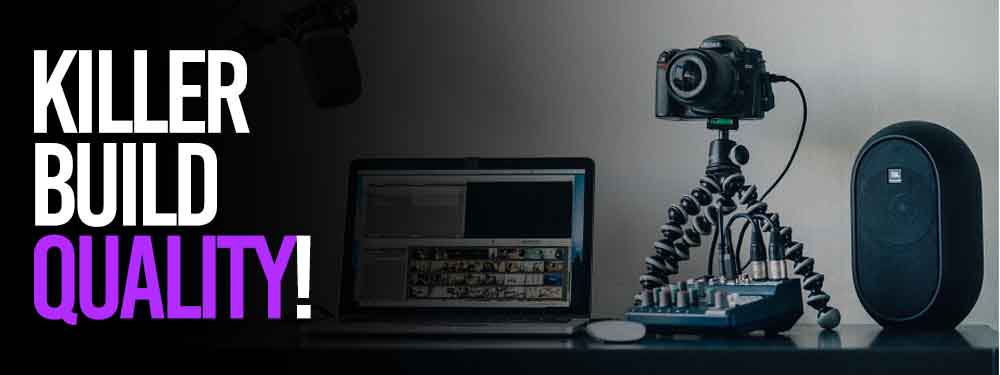
The name JBL screams 'Bluetooth speaker at a house party' nowadays - but don't mistake these studio monitors for that.
These speakers have 60 W of class D power, and 4.5" dual-concentric drivers to provide sound that is powerful for the budget.
With three input ports and the acoustic adjustment for desktop use, you can connect various devices with these monitors from JBL.
This set of monitor speakers will not only work great as a full-size speaker but it also has an advantage in small areas where larger-sized ones just won't fit!
They deliver clear sound and crisp bass and treble, so you'll be able to mix with these with no problem.
Not to mention, these also look quite snazzy - they definitely stand out compared to the more boxy-looking monitors on this list!
They also feature a built-in amplifier to power the speakers, which makes them easy to use.
Check out the compact JBL Professional 1 Series here.
#3. Behringer MS16 Powered Studio Desktop Monitors
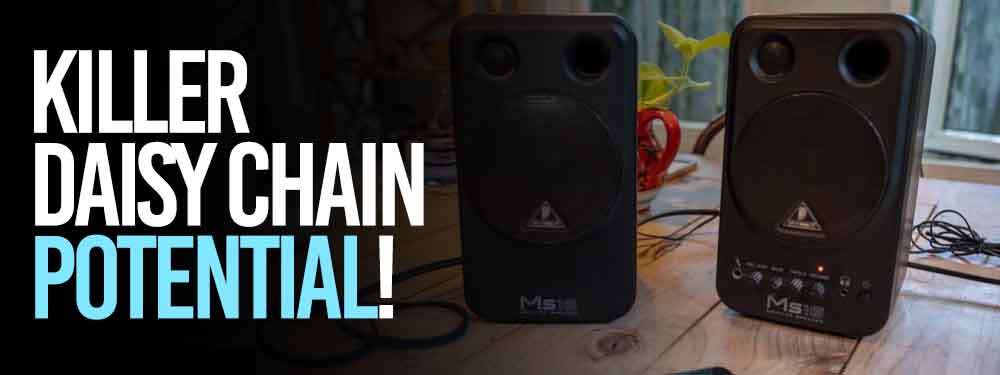
The Behringer MS16 Powered Studio Desktop Monitors set is another affordable desktop monitor set that is very suitable for multimedia in conjunction with vocal and music monitoring applications.
These have been on the market for a while, and for good reason - they're the old reliable affordable studio monitors.
Utilizing the 4" woofer and high-resolution tweeter equipped with two 8-watt amplifiers.
This setup has bigger woofers than others on this list which in turn produces an accurate sound output for you to use for voice or music listening purposes.
The Behringer MS16s are semi-active, ported speakers with a 16-ohm impedance, so they’re best paired with a lower-powered amp or recording interface.
You can also daisy-chain these monitors with other Behringer products to increase the overall volume.
The Behringer MS16s have a nice, balanced sound with a slight emphasis on mids. They are also very versatile, with controls for treble, bass, and volume.
The large front panel also includes a headphone jack for private monitoring.
The Behringer MS16s are a good option if you want a dependable pair of affordable monitors that will last you a long time.
Check out the Behringer MS16 monitors here.
#4. Samson M30
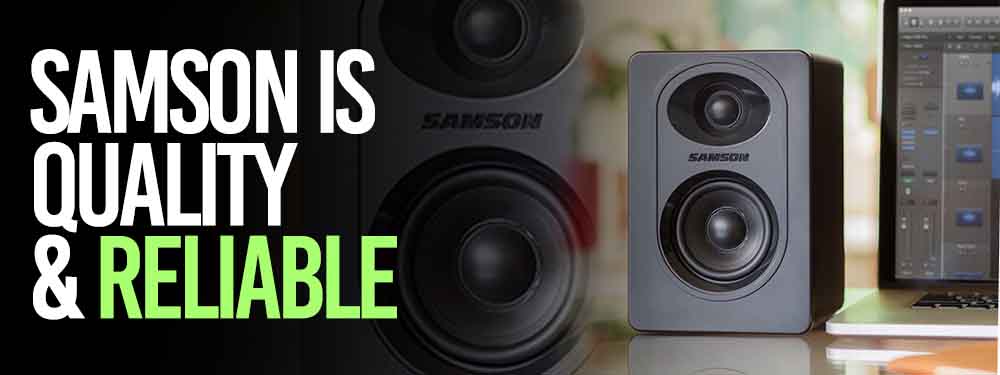
A great choice for beginners, Samson's M30s is a small studio monitor that is perfect for starting your own home studio on a budget.
They're not too big will fit on your desk comfortably in a small room, and are easy to get started with.
The frequency response is 50Hz-20kHz, which is fine considering the size of this speaker system.
They provide balanced sound with bass boost, but you can always add more low-end by plugging into an AUX out port (it also works without subwoofers).
These are worth considering if having smaller studio monitors that don't take up a lot of space is important to you.
Some other bigger studio monitors on this list can deliver more sound and a better frequency response if you're willing to have bigger studio monitors in your setup.
If space isn't an issue, or if more power is necessary, we recommend stepping up from these to something like Samson’s M50s which output 40W per channel but are slightly bigger than these.
The passive heat sink keeps the monitors cool during extended use.
The M30s have a ported enclosure that delivers deep and rich bass. The monitors are magnetically shielded to prevent interference with other devices.
Check out the Samson M30 monitors here!
#5. Mackie CR-3 X
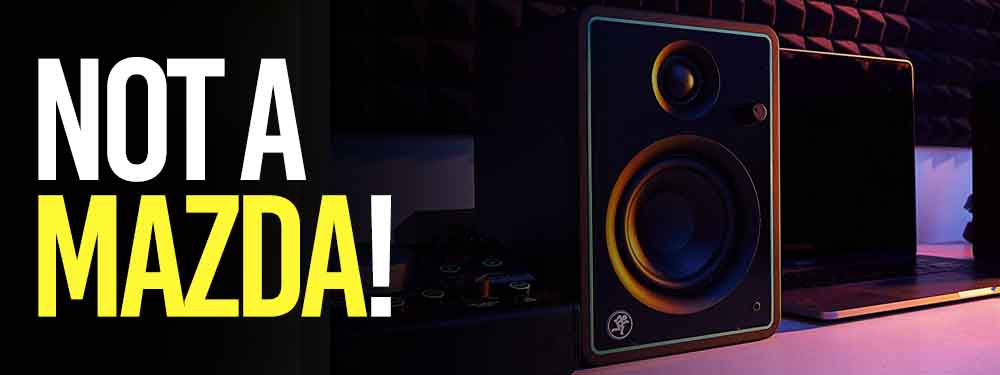
The speakers have an 80W amplifier and they don't specify their frequency range (Mackie always keeps it under wraps).
When it comes to high-end studio monitors, Mackie is near the top of the list.
Each speaker has a 3-inch woofer and a .75-inch tweeter, which is right in line with the other studio monitors on this list.
The CRX3s come with a pair of TRS (1/4-inch) inputs, RCA inputs, as well as an AUX input.
This generous assortment allows you to keep your studio monitors connected to different sources simultaneously without having to constantly plug or unplug cables!
While they don't have a lot of extra features like EQ controls, the fundamentals of what makes a studio monitor good are there: clarity, affordability, and build quality.
It's definitely not one of the smaller monitors on this list and by no means one of the bookshelf speakers.
If size isn’t a big issue, Mackie’s CR-X 3s are sure to deliver crystal clear sound that’ll help make it easier for you to get the perfect mix.
Check out the Mackie CR-X 3 monitors here.
#6. Audioengine A1

When you need some affordable punch for your audio setup, Audioengine’s A1 Home Music System can do the trick.
These speakers have a 2 ¾ inch composite driver and 0.75-inch silk dome tweeter with a frequency response of 65Hz to 22kHz that will surprise you!
If you need more bottom end, hook up a subwoofer to the variable LFE line output or if connectivity is important there's a 3 1/2 mm jack or Bluetooth with SBC, AAC, and aptX protocols.
Check out a review of these monitors here:
These are a great studio monitor under 200 dollars to consider - they pack some solid bass without muddling the entire overall sound.
Check out the Audioengine A1 here.
#7. Tannoy Reveal 402

The Reveal 402 monitors by Tannoy may not be the newest, but they continue to hold up as reliable mix speakers. The low cost is a bonus.
With the five-inch woofer in them, you can expect these to deliver on any low-end performance needs and interestingly enough we found them more accurate than the larger 802s from Tannoy!
It's actually quite amazing that you can get speakers of this quality at the price point we're looking at.
You're getting a frequency response of 56Hz to 48kHz, a 5-inch woofer and 1-inch tweeter, and 1x XLR, 1x 1/4”, 2x 1/8” inputs.
Sure, you might pick up on some deficiencies here and there with the sound, however, the overall frequency balance, imaging, and clarity of these studio monitors exceed all expectations.
Check out the Tannoy Reveal 402 monitors here.
#8. Monoprice DT-3

These are the most affordable studio monitors on our list.
Sure, they might not produce the same level of clarity as some Yamaha HS5s, but they absolutely can't be beat at the price they come in at.
You can absolutely still do some basic mixing with these, and they're for sure better than a Bluetooth speaker or laptop speaker.
If you're just getting started in the world of music production, these will give you everything you need for a small budget.
It's notably smaller than other studio monitors on this list: for the speakers, you get a 3.5” woofer and a 1” tweeter, a frequency response of 75Hz to 20kHz, and you get 1x 3.5mm AUX, 1x Stereo RCA, 1x stereo balanced 1/4″ TRS for inputs.
Having the front-facing headphone jack is a great plus for on-the-go mixing!
Check out the Monoprice DT-3 studio monitors here.
#9. M-Audio BX3
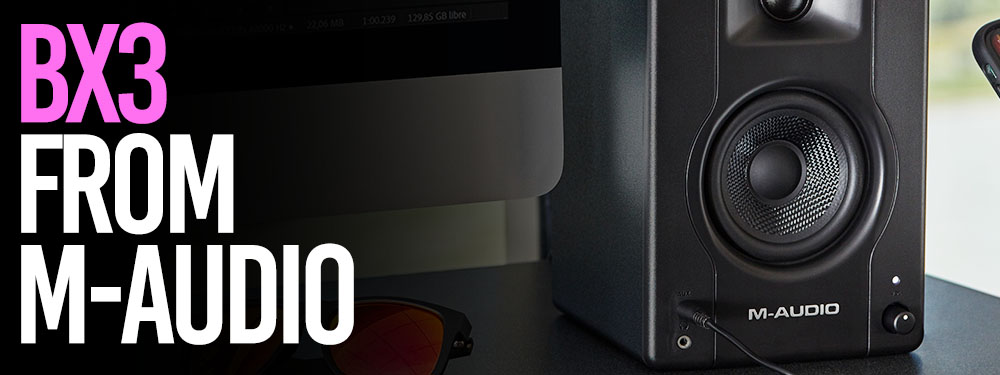
If you're after a set of monitors that are small in size and lightweight, these monitors might be the perfect fit for your studio.
The M-Audio BX3 features an adjustable high and low EQ to suit your music space.
They also have a rear port for richer sound quality with deep lows - great if you want more bass!
These speakers would also make excellent playback devices when it comes to media; they come equipped with front-facing 1/8" ports so any phone or other listening device can easily connect without being physically near the speaker itself.
But if this pair is one size too small, look out for their bigger sibling: the M-Audio BX4!
Check out the M-Audio BX3 studio monitors here.
Studio Monitor Positioning And Placement For Studio Monitors Under $200
When you have budget speakers in your setup, you must make sure that at least your positioning and placement are spot on.
At this price point, we're missing certain features like EQ controls with most studio monitors, so it's clear we make up for these by making your budget monitors sound as good as they can be.
Positioning your speaker properly is a form of room correction to help your monitors sound awesome.

You can put one smaller studio monitor on each side, or you can put them all on one side.
If you put them all on one side, there are a couple of things to keep in mind.
You want to make sure that the positions of the monitors are staggered.
You want to make sure that your ear is not lined up with the same side of the monitors.
In all cases, you want to make sure that your ear is at least 2 feet away from the monitor.
Here's a video tutorial on proper studio monitor positioning:
How To Get A Flat Frequency Response With Budget Studio Monitors
You must get as flat a frequency response, and by making small changes to your room you can make affordable studio monitors sound even better.
To get a flat frequency response in a small room, you can use many techniques:
- Acoustic panels
- Bass traps
- Sound diffusers
These all achieve the right reverb time.
Acoustic panels are best for treating mid to high-frequency range, while bass traps are good at reducing low-frequency range.
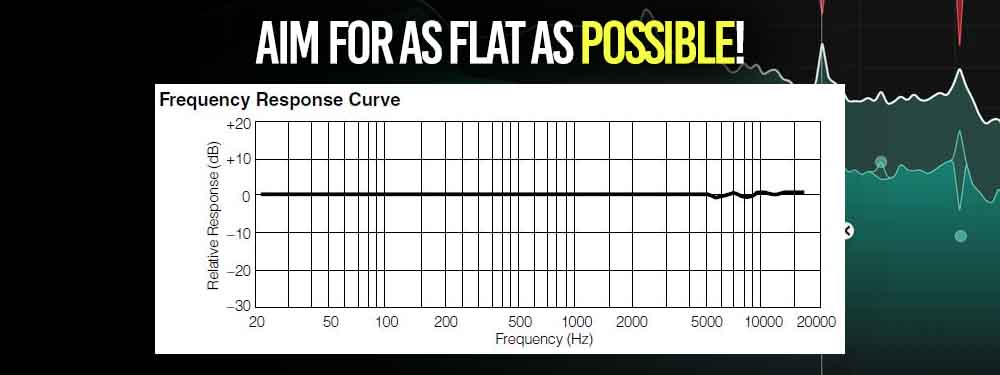
Sound diffusers work great at softening the sound of a room and reducing the reverb time.
Depending on the shape of your room and desired acoustic treatment, you can choose from a variety of panels and diffusers.
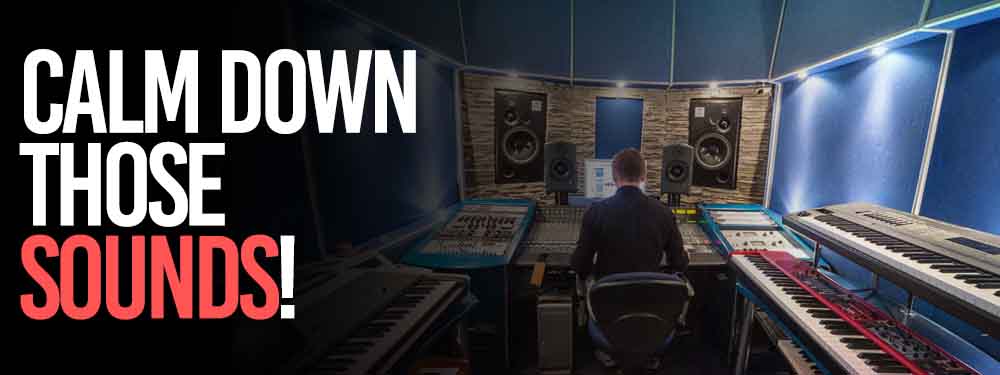
These range from fabric to wood, offering a variety of looks to match any decor.
Picking The Right Budget For Studio Monitors
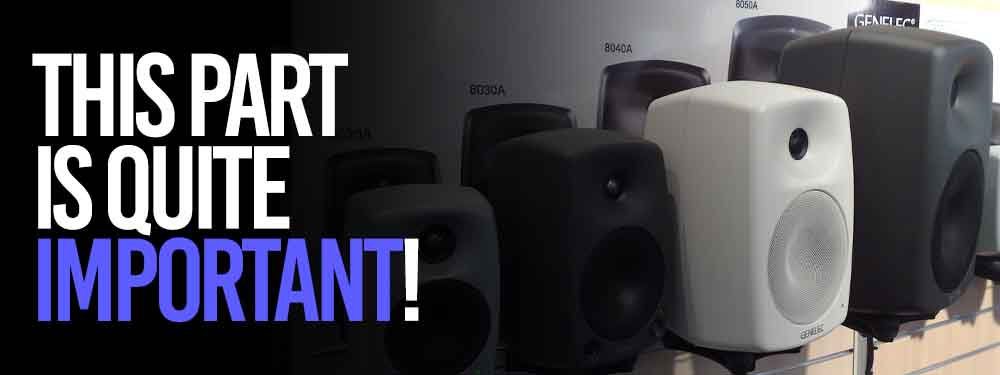
When it comes to picking the right studio monitors under $200, it's important to think about some important factors.
Driver size (or woofer size) is important. The bigger this is, the better your speakers will usually sound (and the more expensive).
The driver is the part of the speaker that produces sound, and each manufacturer has their own driver size.
If you are purchasing new monitors, make sure to check their driver size.
Most drivers range from 5 to 10 inches, with some being as small as 3 inches.
Cheap studio monitors will usually come with 3-5 inch driver tops.
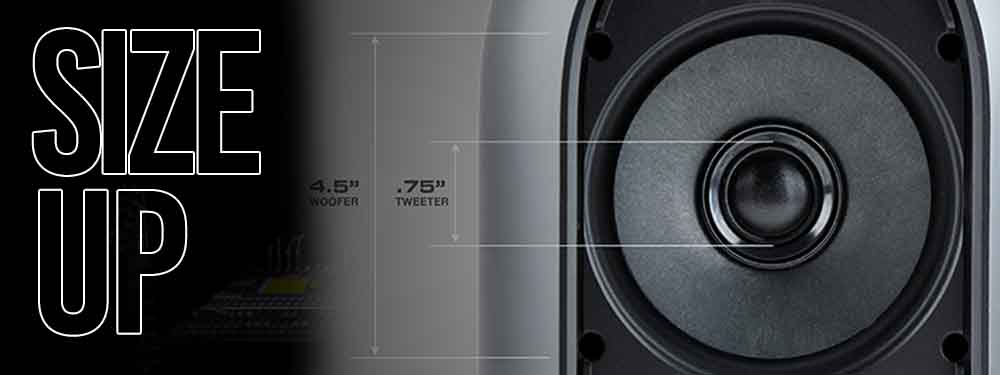
The smaller the drivers, the weaker the low frequencies in most cases.
The key is to find the sweet spot where you can hear as many sound frequencies as possible within your budget.
That's where frequency response comes in - the wider the frequency response, the better.
So be sure to check the technical specifications of every studio monitor you're considering for frequency response.
Once you have determined the best driver size and frequency response in the list of studio monitors you're looking at, you can then make a more educated decision!
Picking Budget Studio Monitors With Good Frequency Range
When choosing a pair of small studio monitors, one of the most important things to look for is the frequency range.
The majority of monitors will fall between 80 Hz and 20 kHz, which is the audible range for the human ear. However, some monitors can go as low as 40 Hz, and others can go as high as 30 kHz.

The lower the frequency range, the deeper the bass.
Usually, more expensive monitors will have more of a frequency range that includes deeper bass frequencies.
The higher the frequency range, the higher the treble. Depending on what you are recording, one may be more important than the other.
If you are recording acoustic instruments, such as a piano or guitar, it is important to make sure that the monitors used have a very high-frequency range so they can accurately reproduce the sound of those instruments.
You’ll also want studio monitors with a low latency, which is the delay between when a sound is produced and when it’s reproduced.
Most studio monitors hover around the 10–20 millisecond range, which is fine for most people. That's why it's always advised to avoid mixing or mastering with Bluetooth speakers.
Avoid monitors that have a high distortion rate, as this will cause them to produce unnatural-sounding audio.
Lastly, you’ll want monitors with a wide dynamic range, which is the difference between the loudest and softest sound they can produce.
Why Frequency Response Matters For Budget Studio Monitors
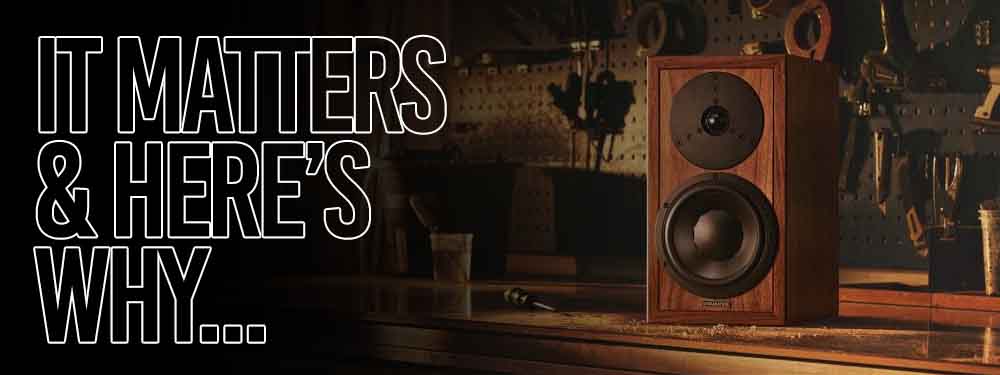
The frequency response of a speaker is the range of sound that it can produce, from the lowest to the highest notes.
A speaker with excellent frequency response will be able to reproduce all notes within that range without any loss of quality.
The human ear can hear sounds within a range between 20 Hz and 20,000 Hz, but most people can only hear up to 16,000 Hz.
Despite this, speakers with good frequency responses can provide a much better audio experience to those who need it.
A speaker with poor frequency response will struggle to reproduce certain notes within the audible range of the human ear, resulting in a reduction in audio quality that many people will struggle to notice.
Poor frequency response can also lead to issues with speaker distortion.
A speaker with a low-frequency response will struggle to produce notes at the low end of the audible range.
This will often result in a significant amount of distortion, reducing the quality of the audio even further.
Picking Budget Studio Monitors For New Music Producers
There are many good choices for the best budget studio monitors out there.
If you're just starting out, you most likely will have a smaller space available for your studio.
Check out our list of the best studio monitors for a small space here.
If you have limited space, it’s going to be difficult to set up large studio monitors.
In these situations, it’s best to go with a bookshelf model.
Most of the best bookshelf monitors are compact, so it’s a good bet if you need something small.
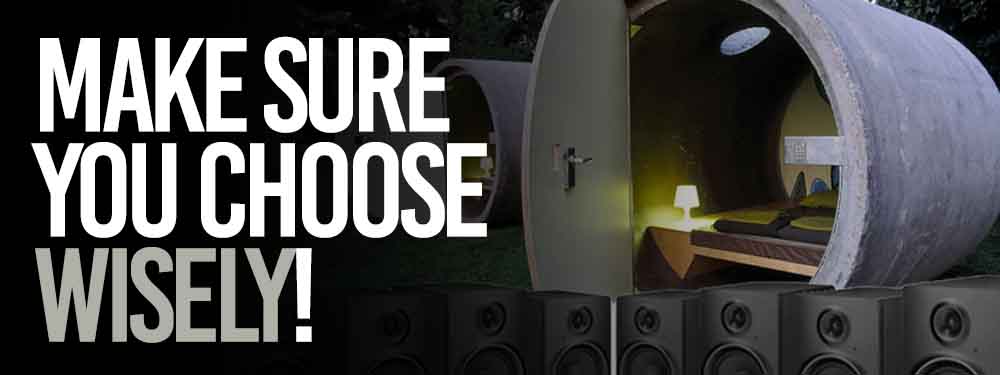
It’s also a good idea to go with active monitors if you’re working in a small studio.
Active monitors have their own power supply, so you won’t have to deal with long power cords.
This is important for small studios, where every inch of space counts. Some monitors will also include a low-frequency port.
Monitor placement is an important detail that can affect the overall sound quality in your studio.
Placing your monitors too close can cause a “clipping” noise in your recordings.
Ideally, you want to place your monitors about 3–6 feet from your recording position.
Difference Between Studio Monitors Vs. Speakers
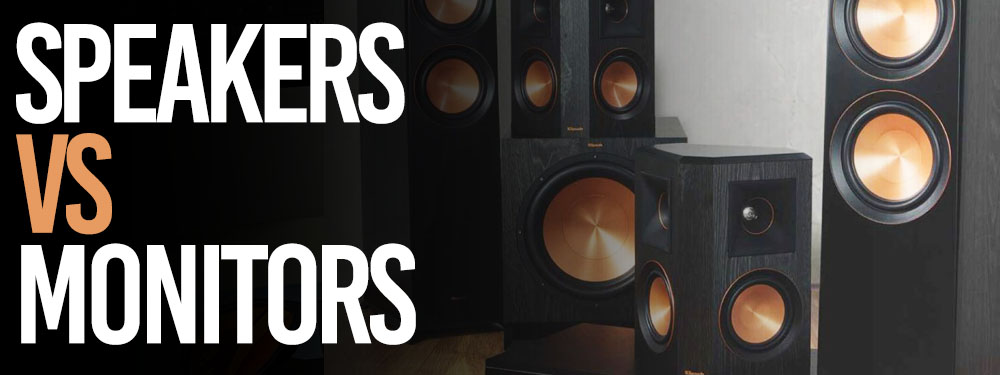
There are some significant differences between these two types, and knowing will help you pick the best studio monitors for a small room.
Studio monitors are specifically designed for audio production, recording, and mixing.
These speakers have increased power handling, accurate response, and high-fidelity sound for hearing every detail during the creative process.
On the other end of the spectrum, computer speakers are designed for casual listening to music and watching videos.
These two types of speakers have some major differences.
Studio monitors are ideal for audio production because they are flat, response curve, and have a high level of detail.
Most of these monitors are unamplified, which means you will need a powered audio interface or dedicated audio card with a line-level input to record sound through these speakers.
Because studio monitors are designed for audio production, they will have a 1/4-inch input, which is larger than the input on most computer speakers.
You can also connect dedicated speakers to your computer with a cable.
Once you’ve connected the speakers, you can adjust the volume with the computer’s software.
Because studio monitors have a flat response curve, you can hear every detail in your audio.
But even small monitors can sound better than big speakers in terms of quality.
The best choice for you will depend on your specific needs.
Hopefully, this comparison has provided you with the information you need to make the right decision.
Get your music on playlists now.
It’s time you get your exposure and listeners up - playlisting by Boost Collective has been trusted by 50,000+ artists worldwide.
It’s easy: Search your song, get on playlists, and track your campaign.
What’re you waiting for? Tap in - and get added to playlists in 24 hours.
Join Boost Collective for free here.


